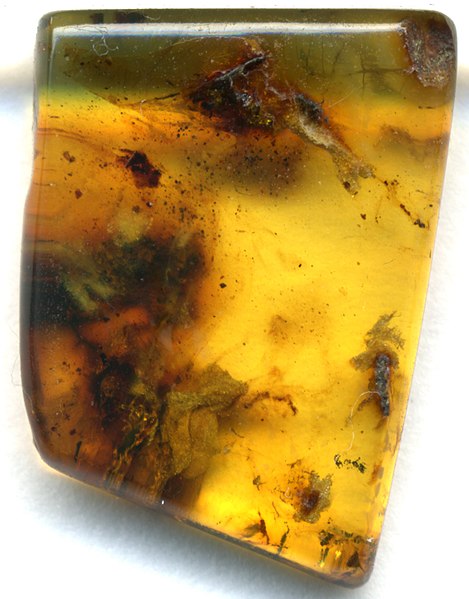Amber Production
Amber is a fossilised tree resin [Image In Sidebar], that was prized for many parts of human history because of its colour [1]. It can be found in the UK in Norfolk and Suffolk [2], but this is the amber that has been created naturally.
Amber can be created using technology. There are two methods for creating Amber, one makes artificial amber which is a safer method, however, bakelite can not be manufactured due to The Great Rewind as it requires crude oil as parts of its manufacturing processes. The other method can be dangerous, as it can create fires that don’t go out with water but require carbon dioxide to be extinguished. As this is the only other known process to make amber apart from mining it is Suffolk and Norfolk, it is used [3].
This method is preferred as it makes Amber that looks no different to its natural counterpart, as it has some of the debris that occurs in the natural version. This is because the sap that is taken from trees has debris in it that is hard to refine out of the raw material, so it is included in the final product.
The amber is then bought by jewellers to make rings and other items of jewellery.
In Birdencaster
On the outer parts of Birdencaster of Segment 12 is a segment of the Forestry Industry. Instead of cutting the trees of this segment, they harvest the sap of the pine trees. They picked this segment because this is the one that contains the sawmill in the same segment. This makes it easier to remember which Segment is used for the collection, melting, shaping and finishing of sap. The sap from pine trees is collected as it can be made into Amber. it can be collected in all parts of the year but production increases in Spring and early Summer.Sap Collector
The Sap Collector is the person who collects the dried sap from pine trees in the forests of Zone 5. This Sap is collected all year round. More members of the amber production crew can be put on the role in spring and early summer to keep up with the tree’s production of sap. The Sap is separated into 250g (8.82oz) batches to be melted.Sap Melter
The Sap Melter is the person who inserts the sap to be melted in a mechanical device. This melts the sap by keeping an open cube of copper over a flame for a few seconds and moves it away and back again, until it is melted. This is because the sap can easily catch fire. These fires do not go out with water but rather carbon dioxide. The job of the Sap Melter is to supervise the sap that is melting, as well as, adding new sap to be melted as part of the 250g (8.82oz) batch. When the batch itself is melted it is poured onto aluminium foil, and put into a vacuum chamber to remove the pressure and air. This also makes the amber not tacky if it were left out of the vacuum chamber to cool down. It is the Sap Melter that becomes Sap Collectors in Spring and early Summer to keep up with the sap collection.Sap Former
The resulting cold stone will behave like amber that is found occurring naturally. The Aluminium will be easy enough to remove from the amber and the block or blob will be broken into chunks. These chunks look like uncut gemstones [Image Left], which are then reshaped by the Sap Former to make various shaped stones of Amber for jewellery. The Stones are then sold to the Warehouses. The table below displays the type and the price the Warehouses is willing to pay for each stone.| Size | Type | Cost |
|---|---|---|
| 6 mm | Square | 760NS |
| 14 mm by 10 mm | Oval | 1,410NS |
| 10 mm by 15 mm | Tear drop | 1,670NS |
| 18 mm by 13 mm | Oval | 3,300NS |
Article Contents
Further Resources
A Wikipedia Article on NorfolkA Wikipedia Article on Suffolk
References
[1]A Wikipedia Article on Amber[2]Where to Find Gemstones In the UK?
[3]Harvesting Sap: Reaping the Benefits of Natural Medicine
Image References
- Picture of Natrual Amber - Wikimedia Commons
Picture was Taken by John Alan Elson Creative Commons Attribution-Share Alike 4.0
- Picture of Uncut Amber - Wikimedia Commons
Picture was Taken by Roland Fuhrmann Creative Commons Attribution-Share Alike 3.0
Acknowledgements
Picture was Taken by John Alan Elson Creative Commons Attribution-Share Alike 4.0
Picture was Taken by Roland Fuhrmann Creative Commons Attribution-Share Alike 3.0
kitoypoy
kitoypoy's Author Page
WriterGreg
Twitch
WriterGreg’s Website
WriterGreg First Draft - Twitch VOD Replay Channel
WriterGreg - Primary Channel
WriterGreg’s World Anvil Author Page




